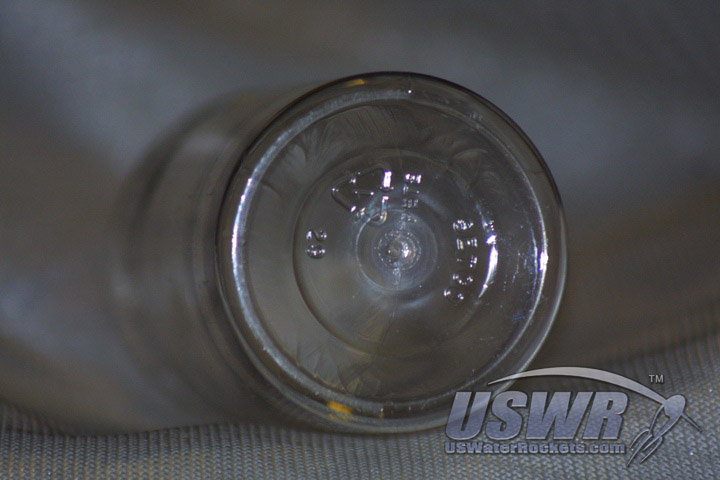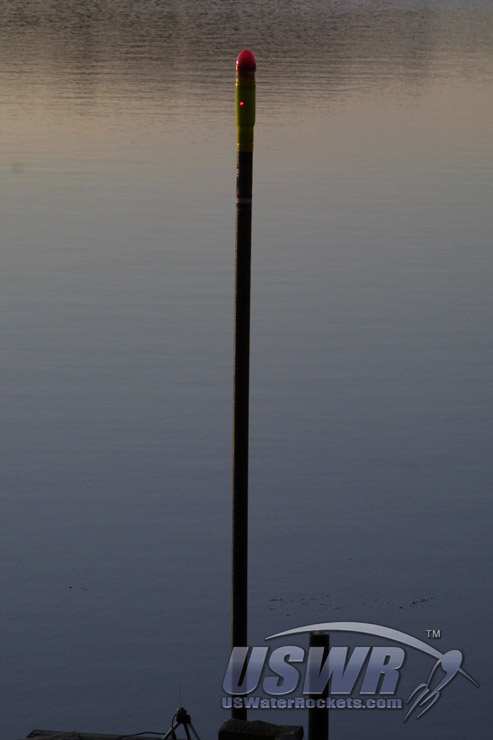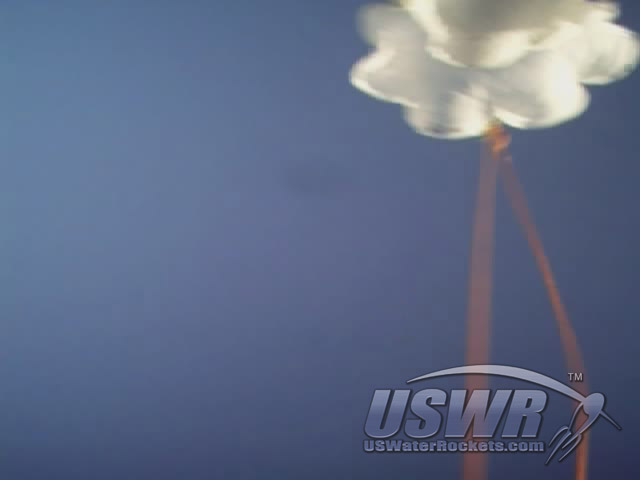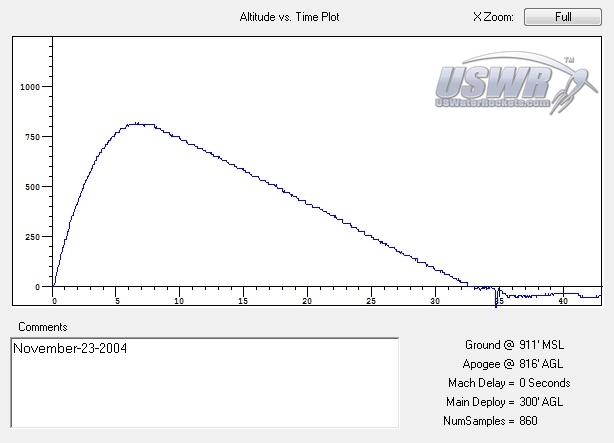Water Rocket Movie Camera Payload Bay designed, constructed and tested in record time.
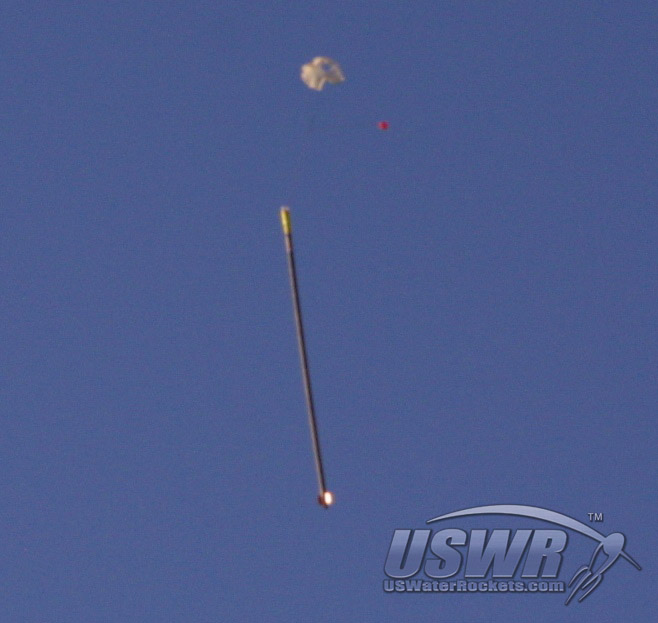
The U.S. Water Rockets design team has completed their first test flight of a new Payload Bay design. The latest design, called "C-7" was constructed using splicing techniques familiar to all Water Rocket Enthusiasts after a common PET plastic bottle was spotted on a supermarket shelf.
U.S. Water Rockets had been experimenting with a new High-Definition Video Camera for use in our Water Rocket World Record Launches, but had little luck locating a suitable protective enclosure for the delicate electronics. Recently, while waiting for suitable launch conditions for another Word Record Launch, the design team successfully adapted the Water Rocket Flight Controller to communicate with the High Definition Water Rocket Video Camera, and set out to fabricate the aerodynamic housing needed to enclose the new system. Within hours, the perfect shape was discovered on a supermarket shelf. Several samples were purchased, emptied of their contents and test fit to the X-10 Water Rocket. The bottles were discovered to have the perfect tapered bottle neck and were made of PET plastic which is familiar to all who perform Water Rocket Experiments. The bottles were slightly shorter the and design required, so a longer bottle was constructed using 'old-school' PET bottle splicing techniques to create a perfect spliced bottle with a perfect air-tight seal.
After construction was complete, the system was given a trial run atop the famous X-10 Water Rocket, and worked flawlessly. A few short days later, the weather conditions were just good enough for a low altitude test flight. Due to the late time of launch, it was decided that a record attempt would not be made with this test flight because the sun was setting and the launch crew did not feel they could perform the two flights required by the WRA2 Rules before it became too dark for the onboard Camera to record the photography of the flight necessary for confirmation of a record. Therefore, flight profile was programmed to be at exactly one half of the pressure used in the last X-10 flight launched in similar weather conditions, so that aerodynamic models could be verified against a known baseline for the new shape of the nose.
The countdown and launch were relatively uneventful, and the X-10 Water Rocket boosted with the reliability it has become famous for. The U.S. Water Rockets Electro-Chemical Parachute Release deployed the parachute within milliseconds of Apogee and the X-10 water rocket began descending. Unfortunately, one of the parachute shroud lines became entangled and prevented the parachute from evenly deploying, resulting in a spinning view from the Water Rocket in the resulting Water Rocket Movie.
The test was deemed an overwhelming success because the electronic systems performed perfectly and recorded the very first High-Definition Water Rocket Video complete with an amazing sounding audio track where every phase of the flight can be heard. With this accomplishment, the team at U.S. Water Rockets has achieved another milestone in the Water Rockets Record Book.
Flight Video:









